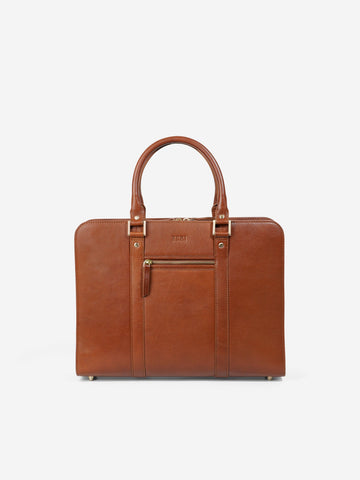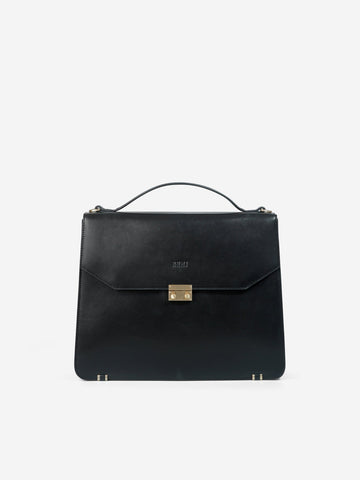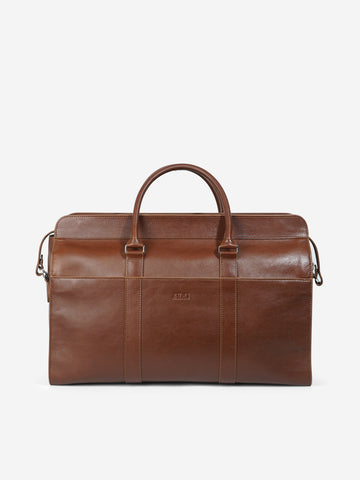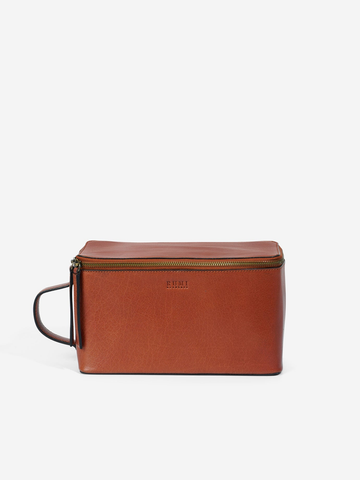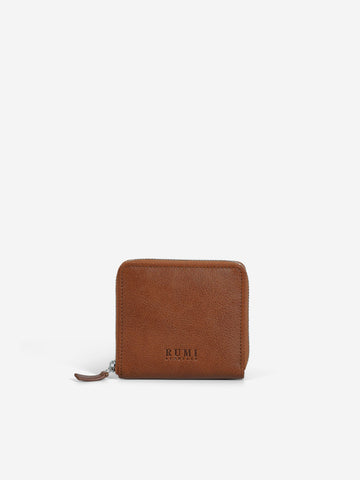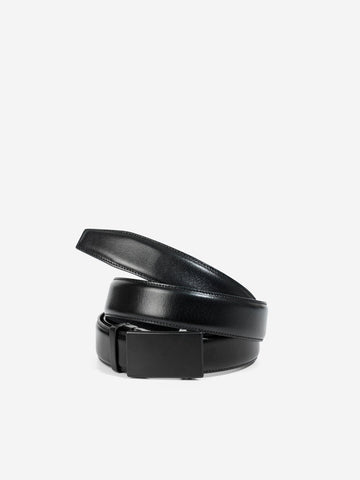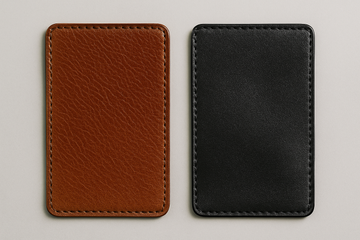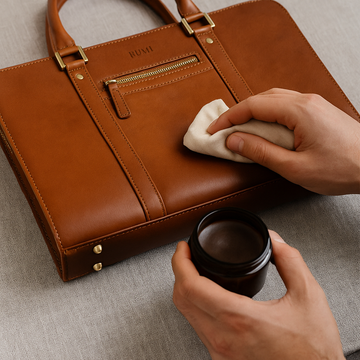Choosing the right leather is no longer just about aesthetics. Behind every leather bag lies a story, not only of craftsmanship, but also of chemical processes, environmental impact and working conditions. For those who want to consume more consciously, the decision between vegetable tanned and chrome tanned leather has become a key consideration. But what really sets them apart, and how should you choose?
This article goes beneath the surface and offers a detailed comparison between the two most common tanning methods so you can make a choice that reflects both your style and your values.
Two different approaches: how leather is treated
It all starts with the raw hide. But it’s the tanning method that determines how the leather will feel, look and impact the world around you.
Chrome tanning is an industrial process that uses chromium salts (typically chromium III sulfate) to quickly preserve and soften the hide. It is the dominant method globally, because it is fast, cost-effective and produces supple, color-stable leather that can be shaped into a wide range of products.
Vegetable tanning, on the other hand, is a traditional and natural method that uses tannins extracted from plants such as oak, chestnut and walnut shells. The process takes several weeks but results in a leather with more texture, character and a truly living appearance.
6 key differences to consider
1. Environmental impact
Vegetable tanning is significantly more environmentally friendly. It does not use heavy metals or produce the same level of toxic waste. Chrome tanning, especially in countries with weak regulations, can lead to water pollution and hazardous working environments.
2. Feel and appearance
Vegetable tanned leather has more depth, visible grain and variation in tone. It ages beautifully and develops a unique patina over time. Chrome tanned leather tends to be more uniform in color and finish, with a smoother look that stays more consistent over its lifetime.
3. Durability
Vegetable tanned leather is usually thicker and more rugged. It stands up to wear and is ideal for long-lasting products like full grain leather weekend bags. Chrome tanned leather is softer and more pliable from the beginning, making it suitable for garments or smaller items, though it generally has a shorter lifespan.
4. Function and resistance to water
Chrome tanned leather offers better water resistance from the start. Vegetable tanned leather is more sensitive to moisture in the beginning but can be treated with wax or balm for protection. Over time it adapts to its environment and builds more personality.
5. Color range and finish
Chrome tanning allows for virtually any color, which is why it is popular in the fashion industry. Vegetable tanning tends to yield more natural hues – brown, cognac, natural and black – but these deepen with age and give each item a unique story.
6. Price and availability
Because chrome tanning is faster and cheaper, it dominates the commercial market. Vegetable tanned leather takes more time, skill and resources, and is therefore more expensive. But for many, it is a long-term investment in both quality and responsibility.
What is semi-vegetable tanned leather?
There is also a middle ground: semi-vegetable tanning. This hybrid method combines natural tannins with a small amount of synthetic agents. The result is a softer, more color-stable leather that still carries the character of traditional vegetable tanning.
At RUMI OF SWEDEN, we use only full grain leather that is either vegetable or semi-vegetable tanned and sourced from LWG-certified tanneries. It is our way of combining high quality with a more responsible approach to production.
What suits you – and the planet?
There is no one-size-fits-all answer. Your priorities should guide your choice:
-
Do you want a bag that ages gracefully and reflects your personal journey?
Then the Santorini weekend bag or the Milano toiletry bag in vegetable tanned leather are excellent options.
-
Are you looking for a specific finish or color?
Chrome tanned or semi-vegetable tanned leather might be more suitable – as long as it comes from brands that are transparent about their production.
-
Do you care about reducing your environmental footprint?
Vegetable tanned leather offers a clearer path toward sustainable consumption.
Choosing consciously is choosing with purpose
In the end, it’s not just about the bag you carry. It’s about what that bag says about you. A leather bag becomes your quiet companion, joining you in airport lounges, business meetings and weekend escapes. It says something, even when you don’t.
By understanding the differences between vegetable and chrome tanning, you gain the tools to choose more intentionally. Not just for yourself, but for the kind of world you want to support.
